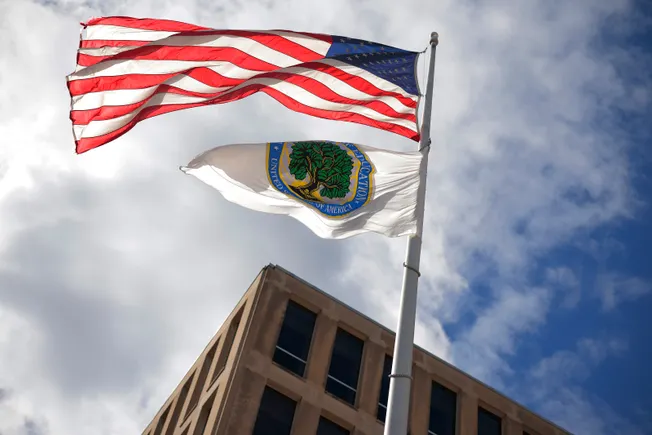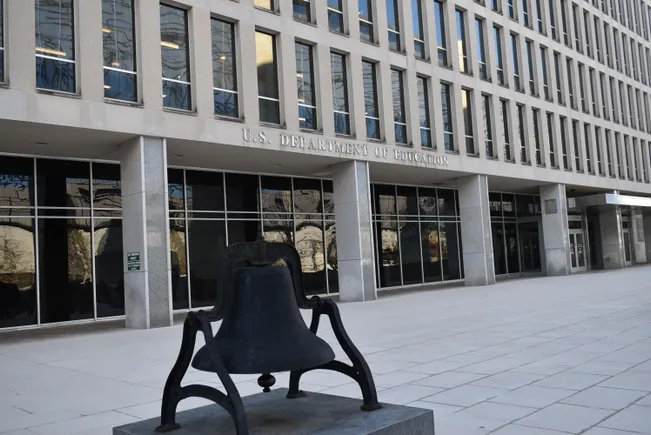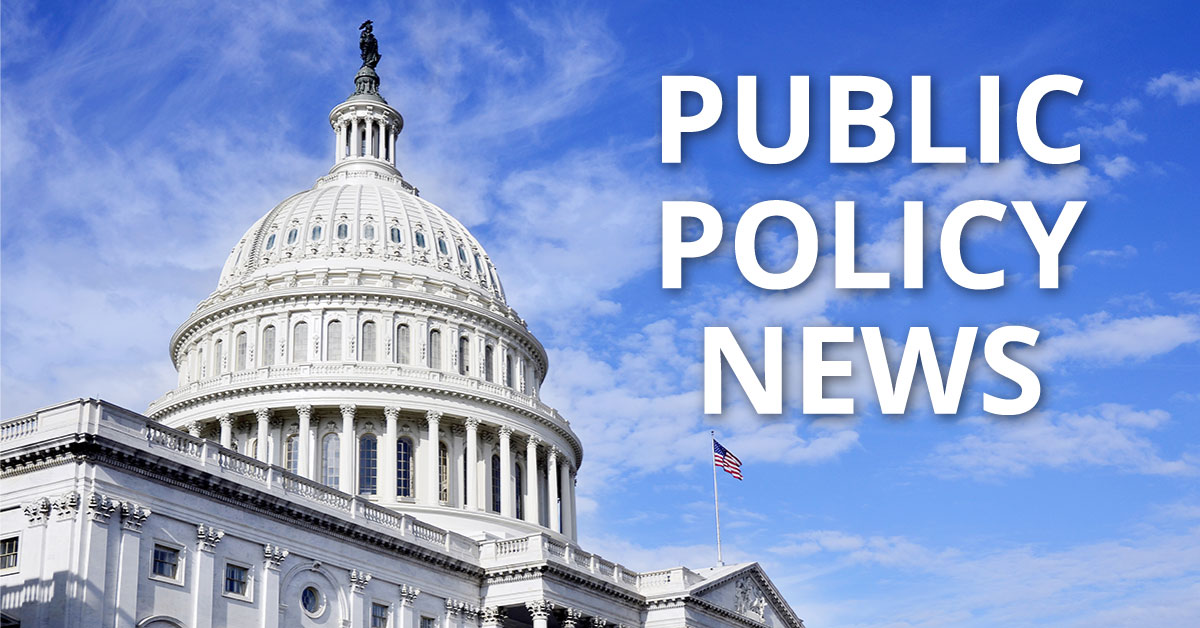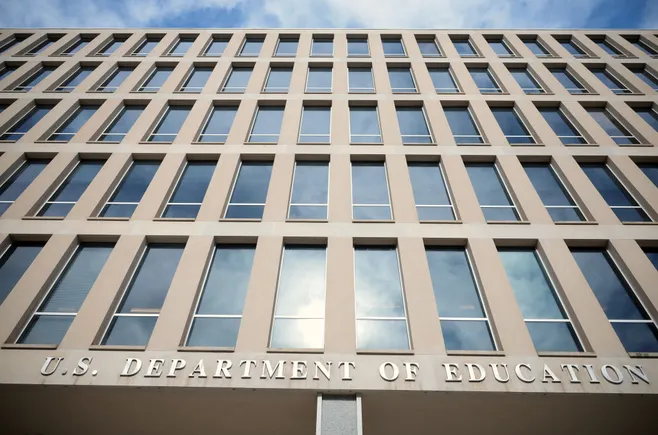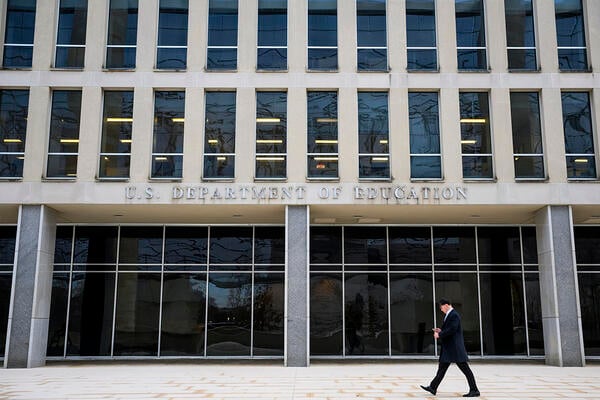The Education Department won’t be able to enforce its guidance that declared all race-based programming and activities illegal following two court orders Thursday.
Federal judges in New Hampshire and Maryland handed down the rulings after finding plaintiffs in the two separate lawsuits were likely to succeed in proving that the Feb. 14 Dear Colleague letter violated procedural standards and the First Amendment. Prior to the orders, colleges and K-12 schools that failed to comply with the letter risked their federal funding.
“Although the 2025 letter does not make clear what exactly it prohibits, it makes at least one thing clear: schools should not come close to anything that could be considered ‘DEI,’ lest they be deemed to have guessed wrong,” the New Hampshire judge wrote. And since loss of federal grants could cripple institutions, “it is predictable—if not obvious—that [they] will eliminate all vestiges of DEI to avoid even the possibility of funding termination,” regardless of whether it is an example of executive overreach.
The New Hampshire court’s preliminary injunction, which was issued first, was limited to institutions that are members of the plaintiff association, leaving many colleges and universities vulnerable. But just hours later, a Maryland judge filed her opinion that prevented the letter from taking effect until the case is resolved, which essentially serves as a nationwide injunction.
The injunctions do not, however, block all of Trump’s attacks on DEI. The Dear Colleague letter was just one aspect of the president’s multipronged strategy.
In a separate lawsuit from the NAACP challenging the department’s guidance and actions related to DEI, a District of Columbia judge blocked the department from requiring that K-12 schools certify that they don’t have any DEI programs. Thursday, April 24, was the deadline to comply. The department threatened to withhold federal funding from K-12 schools that didn’t meet the certification requirement. The judge ruled that “because the certification requirement conditions serious financial and other penalties on insufficiently defined conduct,” the plaintiffs were likely to succeed.
Since its release, the Dear Colleague letter has sent K-12 and higher education advocates across the country into an uproar as lawyers and others argued that the document was a prime example of Trump abusing presidential power.
The Education Department said in the guidance that the Supreme Court’s 2023 ruling in Students for Fair Admissions v. Harvard, which banned race-conscious admissions, also made any race-based programming, resources and financial aid illegal. The department gave colleges two weeks to comply. A few weeks after the letter took effect, the Office for Civil Rights opened dozens of investigations into colleges, accusing them of violating the guidance in the letter.
Some colleges and universities, in an effort to comply with the letter, began to retract, or at least rebrand, their DEI activities, resources and scholarships. Some institutions, including the Universities of Cincinnati, Pittsburgh and Alaska, responded by scrubbing their websites of words like “diversity” and “inclusion.” Others, including Ohio State University, shuttered DEI offices and changed the eligibility requirements for certain programs entirely. (Those changes were made despite the advice of some academic associations to avoid pre-emptive compliance.)
On March 3, the Education Department released an FAQ that watered down and provided clarity on some of the letter’s bold orders. But still, higher education groups continued to push back, and by the end of the week, both lawsuits had been filed.
The one in New Hampshire was led by the National Education Association, the nation’s largest K-12 union, and the other in Maryland was from the American Federation of Teachers, a union that includes many higher education faculty.
The unions argued that the letter and its threat to cut federal funding violated the First and Fifth Amendments, using vague language that exceeded the Education Department’s statutory authority. They also alleged that the scrubbing of DEI programs as well as the potential funding cuts would weaken schools’ and universities’ ability to act as tools of socioeconomic mobility.
“This letter is an unlawful attempt by the department to impose this administration’s particular views of how schools should operate as if it were the law. But it is not,” the AFT complaint stated. “Title VI’s requirements have not changed, nor has the meaning of the SFFA decision, despite the Department’s views on the matter.” (Title VI of the Civil Rights Act prohibits discrimination on the basis of race, color or national origin.)
At a recent hearing in the Maryland case, the Department of Education argued that its letter was merely a reminder that existing civil rights laws protect white children from discrimination just as much as children from a minority group, Maryland Matters reported.
“It’s highly unlikely that they’re going to go after a school because they taught a certain book,” U.S. attorney Abhishek Kambli said. “All this letter does is just clarify what the existing obligations are under Title VI [of the Civil Rights Act].”
But the Maryland judge didn’t buy that argument, and she sided with the plaintiffs, as did the New Hampshire judge.
The New Hampshire judge said the policies outlined in the letter failed to appropriately define DEI and therefore threatened to erode the “foundational principles” of free speech and academic freedom.
The Maryland judge, on the other hand, approached her case from a perspective of “substantive and procedural legality,” saying the Trump administration’s letter failed to hold its own on that front as well.
“Plaintiffs have shown that the government likely did not follow the procedures it should have, and those procedural failures have tangibly and concretely harmed the Plaintiffs,” Gallagher wrote. “This case, especially, underscores why following the proper procedures, even when it is burdensome, is so important.”
And though the orders are just temporary holds and litigation will continue, education stakeholders consider it a win.
“The nationwide injunction will pause at least part of the chaos the Trump administration is unleashing in classrooms and learning communities throughout the country, and it will provide the time for our clients to demonstrate clearly in court how these attacks on public education are unconstitutional and should be permanently stopped,” said Skye Perryman, president of Democracy Forward, a pro bono legal group that is representing AFT in Maryland.
AFT president Randi Weingarten added in a statement that “the court agreed that this vague and clearly unconstitutional requirement is a grave attack on students, our profession, honest history, and knowledge itself.”
For the NEA, the New Hampshire decision was “a victory for students, parents, and educators” that blocked an “unprecedented and unlawful” effort to control American schools.
“Across the country educators do everything in their power to support every student, ensuring each feels safe, seen, and is prepared for the future,” NEA president Becky Pringle said in a news release. “Today’s ruling allows educators and schools to continue to be guided by what’s best for students, not by the threat of illegal restrictions and punishment.”
The Department of Education did not respond to Inside Higher Ed’s request for comment prior to the publishing of this story.


